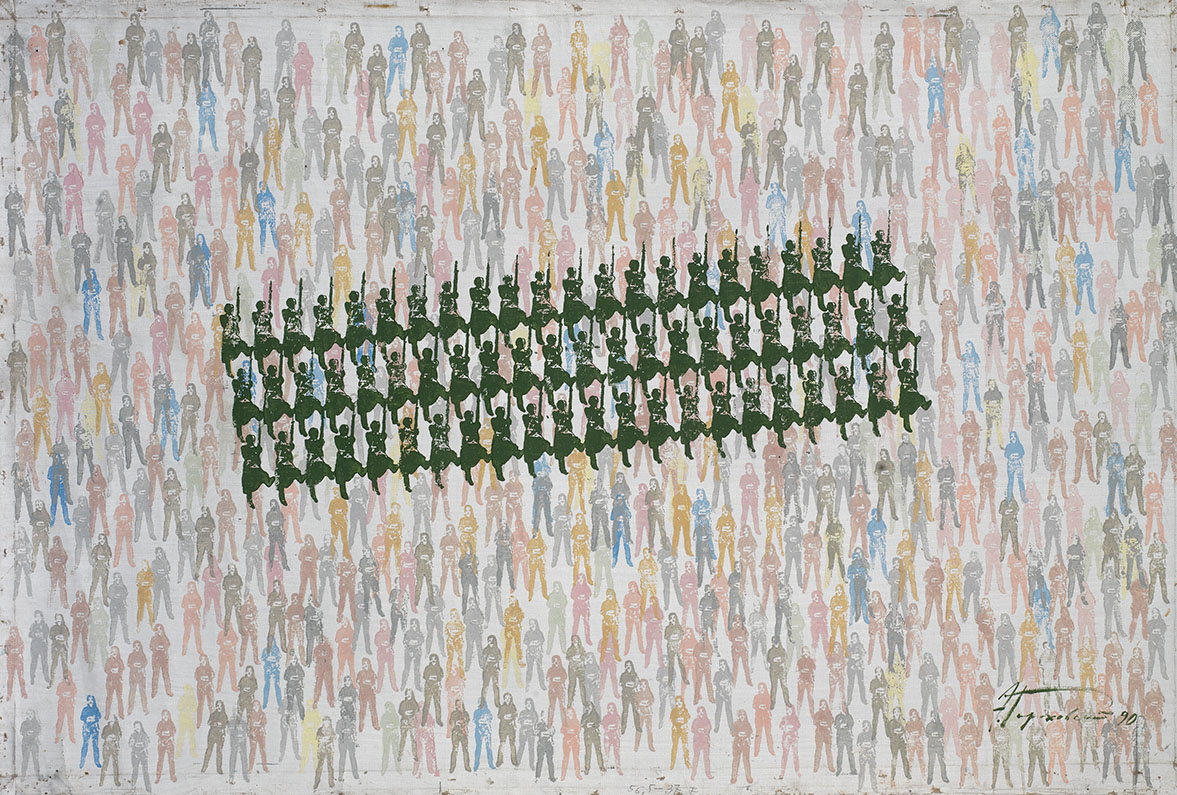MacDougall Auctions 12-18 June 2008
12 June 2008

* 437. GOROKHOVSKY, EDUARD 1929-2004
People and Party are United signed and dated 1990.
Oil and stamp on canvas, 95 by 148 cm.
20,000-30,000
Provenance: Private Collection.
Literature: For works from the same series People and Party, see Eduard Gorokhovsky, Zhivopis Grafika, Moscow 1991, p.74.
The historical interpretation of culture and civilisation the past
and the present became a characteristic feature of the work of
Eduard Gorokhovsky as early as the 1970s. His creative oeuvre
saw contemporary culture viewed through the prism of post-modernism,
and the rejection of a subjective appraisal of the world.
This approach is also characterised by an interest in large scale
historical themes and a dialogue between the generations,
between past and present and particularly his treatment of political
themes, which became a characteristic of his work from the
late 1980s to early 1990s.
Gorokhovsky became actively involved in the process of re-interpreting
Soviet history by reviving surrealism’s visual motifs. This was
exemplified by his numerous portraits of Lenin and Stalin, who
undergo a process of decay and disintegration into smaller constituent
parts, smaller portraits which only when seen from certain
angles revealed themselves as a whole image. By employing old photographs
Gorokhovsky created a set of cliched images filling the
entire work. One example is the photographic image A Guard of
Honour in front of the Mausoleum on Red Square. Gorokhovsky employed
this style in a series of works from the late 1980s to early 1990,
including The Nation and the Party are one and The Guard of Honour.
The basic concept for these works was superimposing on a “passive”
nationally specific background, an “aggressive” column of marching
soldiers who gradually conquer the entire composition.
Gorokhovsky developed his own method of working with photographs:
“For me, a painting almost always consists of two elements.
The first is a photograph, which is reproduced by one means or
another, and the second is an element which invades the photographic
space. This secondary element may be anything you like:
a geometric figure, a silhouette, text or even another photograph.”
Larisa Kashuk, Ph.D
Notes on symbols:
* Indicates 5% Import Duty Charge applies.
Ω Indicates 20% Import Duty Charge applies.
§ Indicates Artist's Resale Right applies.
† Indicates Standard VAT scheme applies, and the rate of 20% VAT will be charged on both hammer price and premium.